Growth flowers from foamiran

Growing flowers from foamiran are a good way to decorate a residential or office space, a banquet hall or a photo space. They can be easily made with your own hands, the main thing is to follow the sequence of actions and do everything carefully and slowly.

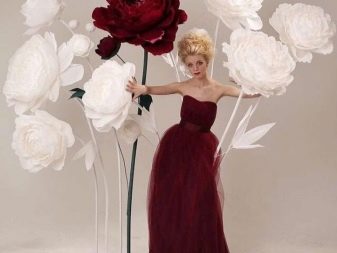
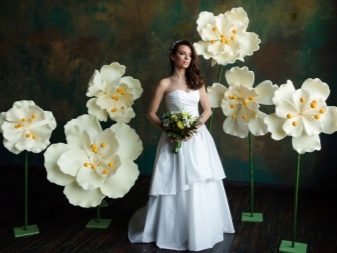
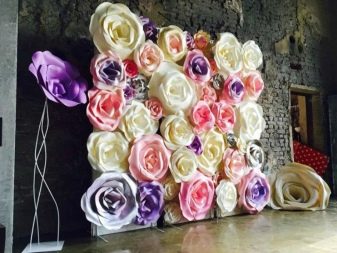
Peculiarities
The use of flowers from foamiran in interior design is a mast-have in the field of design. They can be harmoniously fit into any style - from loft to classic. Such decor can be placed on the wall, covering part of it or the entire surface, create a panel, lamp or any other element of the interior.
Growing flowers-lamps of large sizes look interesting and unusual. They give a subdued, dim light, colored in the tones of the material from which the flower is made. Such a lamp requires a simple, discreet "framing" - furniture, decor items surrounding it should not distract attention from the flower itself. Their task is to emphasize the beauty and originality of the lamp. In its manufacture, the thickness of the material plays an important role - it must transmit light well, but at the same time be quite dense in order to provide the necessary strength of the product.
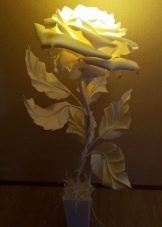
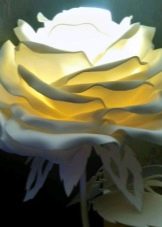
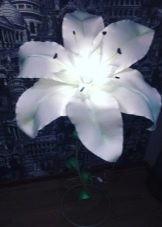
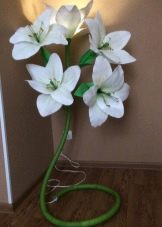
Required materials and tools
To create a simple flower that will not perform additional utilitarian functions, but will only become a decorative item, the list of necessary materials is limited to sheets of foamiran of different colors, a base for a bud and stem, a stapler, and glue. If you plan to create a lamp, you will have to additionally stock up on electrical equipment. The main material (foamiran) can be of two types: glitter or marshmallow. They differ in the thickness of the sheets.The density range is from 0.5 to 2 millimeters.
It will be difficult to make beautiful, natural flowers from glitter foamiran - it is too dense. It is good to use it when creating jewelry for gifts, hairpins, brooches and similar items that do not require changing the shape of the leaf. The elegance inherent in this material is appreciated by craftswomen, like its other virtues - affordable price, density, ability to keep its shape well.
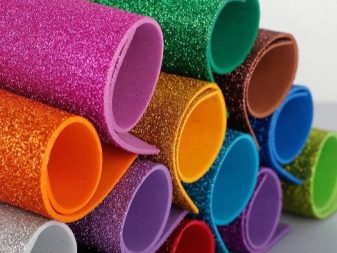


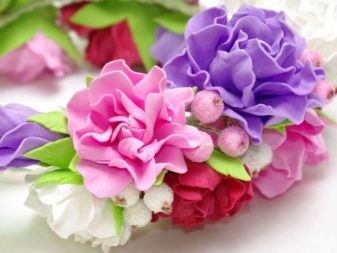
When choosing this type of foamiran, you need to remember that it does not lend itself to tinting, so you should purchase sheets of the name of the color that you need.
In addition, you will need:
- iron - in order to heat the foamiran to give it the desired shape;
- molds - they will help to make the leaf textured, like that of living plants;
- tape tape - it is wrapped around the stem of flowers so that it looks realistic;
- flock powder - a powder that allows you to make the leaves, stamens of flowers velvety;
- the stamens themselveswhich are presented on the market in a wide variety.
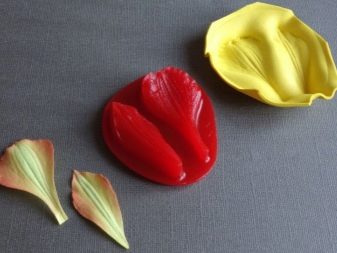
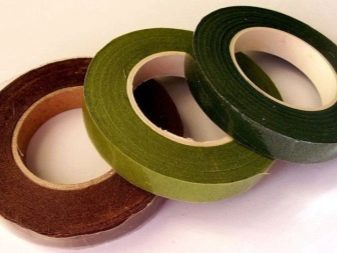
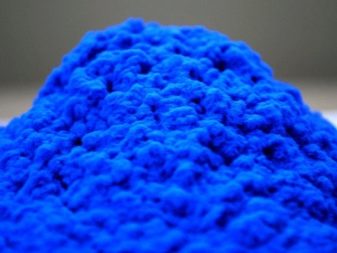

How to do it?
Learning how to make growth flowers from foamiran with your own hands is not as difficult as it might seem at first glance. In order to master this type of creativity, you can watch master classes for beginners, where each step of creating these decorative elements is described in detail. Various templates, patterns, diagrams also facilitate the work, helping not only to cut the necessary parts accurately and accurately, but also explaining how to connect them correctly.
Flowers are made in stages, if all instructions are followed, even a beginner can easily cope with this.
Most often, roses are used in the decor of premises or in the design of photographic space - this regal flower enjoys special love and popularity.
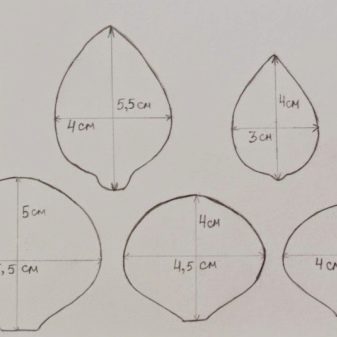
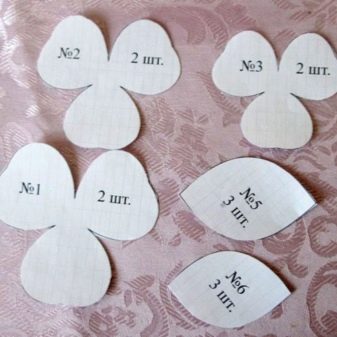
In order to make it, you will need:
- green foamiran (half a leaf);
- pink foamiran (4 leaves);
- metal-plastic pipe (3 meters);
- Moment glue or glue gun;
- green teip tape;
- Scotch;
- green corrugated paper;
- cardboard;
- stapler;
- newspaper tubes (6 or 7 pieces).
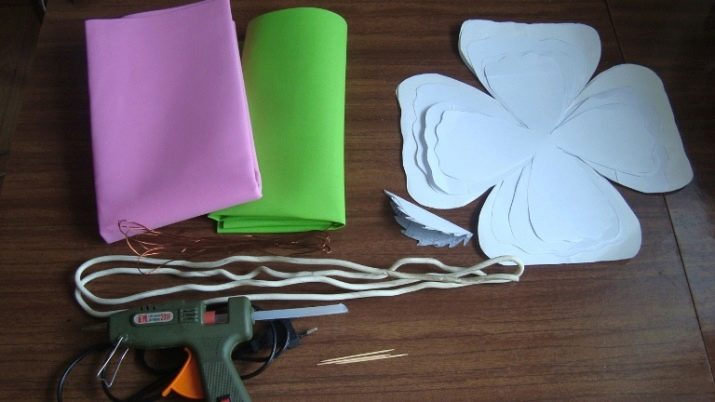
First of all, you need to make petals... They will be of different sizes, the largest are prepared first. To do this, 6 squares measuring 35x30 centimeters are cut out of pink foamiran, from which petals are cut out using templates or arbitrarily.
Next - smaller parts. They are cut from the remnants of the pink material. The base will be the same squares, but their sides will decrease along with the required size of the petals themselves: 30x30 (6 pieces), rectangles 20x26 (6 pieces), 12x15 (6 pieces), 8x10 (the same). To make even, identical rectangles, a whole sheet of foamiran is taken and divided into 3 parts. The resulting rectangles are 20 x 70 centimeters in size. Then, on the longer side (70 cm), they are laid twice by 26 cm and cut off.
Petals are cut out of all blanks using special patterns or relying on your own imagination. Then they need to be processed - to make the edges wavy. To do this, using an iron (temperature mode "silk-wool"), each element is heated and the upper edge of the petal is gently stretched. The lower part is collected in 2-3 folds and fixed with a stapler.
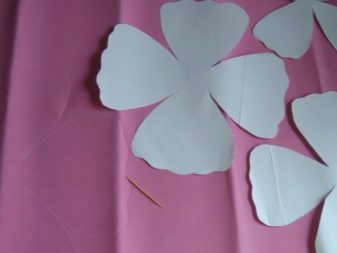

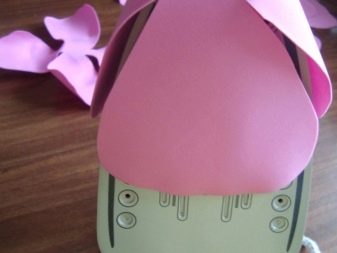

You can use glue, but it will take more time, since the glued parts must be left for at least 24 hours so that they are well glued and "set".
The next step is to prepare the base of the flower. This will require thick cardboard, from which you will need to cut a square measuring 20x20 centimeters. Further, the corners of this square are cut off so that you get a neat, even circle on which the petals will be glued. They start with the first row - the largest. They are attached closer to the edge of the circle, stepping back 5 centimeters. Overlap the petals so that the edge of one slightly overlaps the other. Each next row is glued in a checkerboard pattern in relation to the previous one.A center made from the remains of foamiran is glued into the center of the flower.

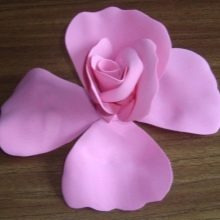
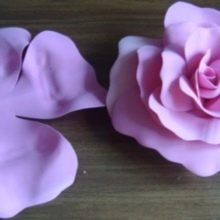
Stem
For its manufacture, newspaper tubes are taken and inserted into a metal-plastic pipe. A mark is placed where they ended. The workpiece is removed from the pipe and thickly coated with glue, leaving the ends free from it for a length equal to the radius of the flower base. We glue the stem to the base - first the center, then, carefully glueing the end of each tube with glue, we fix them by placing at equal distances from each other. After the glue has dried, you can put on the pipe and also attach it to the base. This will give the stem extra strength.
After that, the stem needs to be decorated. For this, corrugated paper is used, with which the base is well covered so that it is not visible anywhere. You can simply wrap the stem with paper and glue it to the base of the flower at the top, or glue it over the entire surface of the stem.
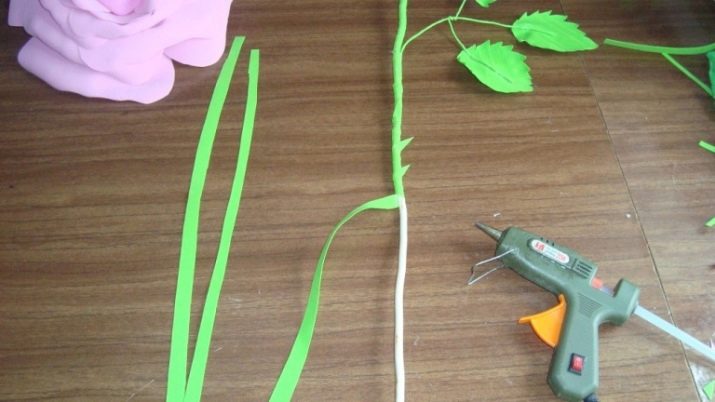
The second option is preferable - this way the material will hold better and will not move out during the work.
On top of the corrugated paper, the stem is wrapped with tape, also carefully, completely covering the paper layer. Then a sepal is made to cover the attachment point of the stem and the base. A green foamiran is taken, parts of the required size in the amount of 6-8 pieces are cut out of it and glued to the base. They are fastened in the same way as the petals - in a circle, with an overlap.
Leaves
The final stage will be the making of the leaves. They are cut from green material, giving the shape that is natural for this type of flower. In their manufacture, you can use molds - they will allow you to create a relief on the surface of the leaves and make them realistic.
The sizes of the leaves are often taken arbitrary, at the request of the master. They may be absent, which, in principle, does not in the least spoil the overall impression of the product.
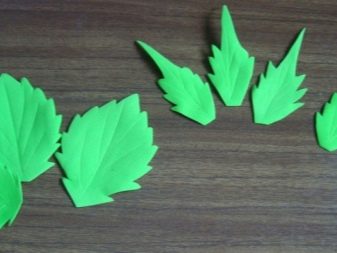

Possible compositions
Foamiran can be used to make not only roses, but also any other flowers. This material gives a very wide scope for creativity due to its flexibility, pliability and at the same time the ability to maintain the given shape. You can make any flowers from it - chamomile, poppies, cornflowers, peonies and many others. For novice craftsmen, chamomile, cornflower and similar types of plants are well suited. They are simple in execution, they will allow you to fill your hand in this new type of creativity, but at the same time they are no less attractive and effective than the same roses or peonies.
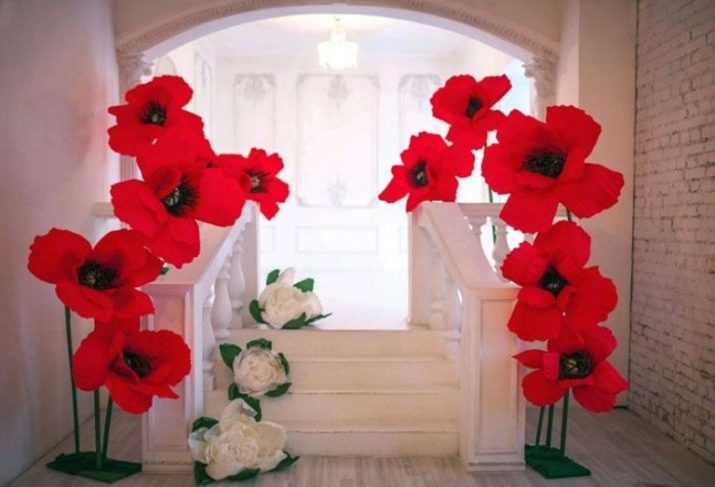

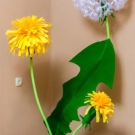
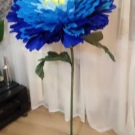
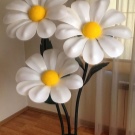
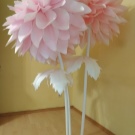
By combining several types of flowers, you can get a wonderful decor element that will decorate any interior. It can be a work in Provence or country style - if it is based on wildflowers, or a more classic composition with roses, lilies and other similar flowers - for special occasions.
Care advice
Due to the moisture resistance of foamiran, it is easy to care for products made from it. It is enough to wipe them with a damp cloth as needed to remove dust and other possible dirt. No special cleaning agents are required. But this only applies to the material that has not been additionally tinted with paints that are afraid of moisture.
If foamiran has been tinted with gouache, watercolors or other easily washable compositions, the product will “live” only until the first pollution, which will be impossible to remove without the use of water. After that, it will have to be thrown away.
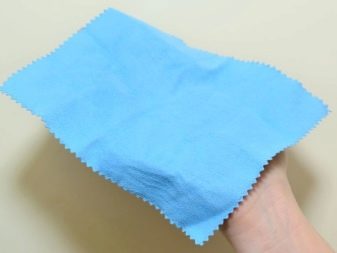
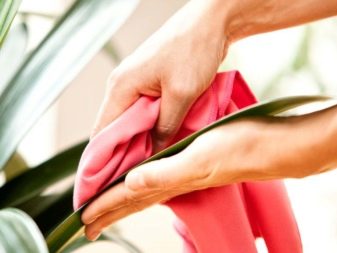
See the video below for a master class on creating a growth rose from foamiran.






